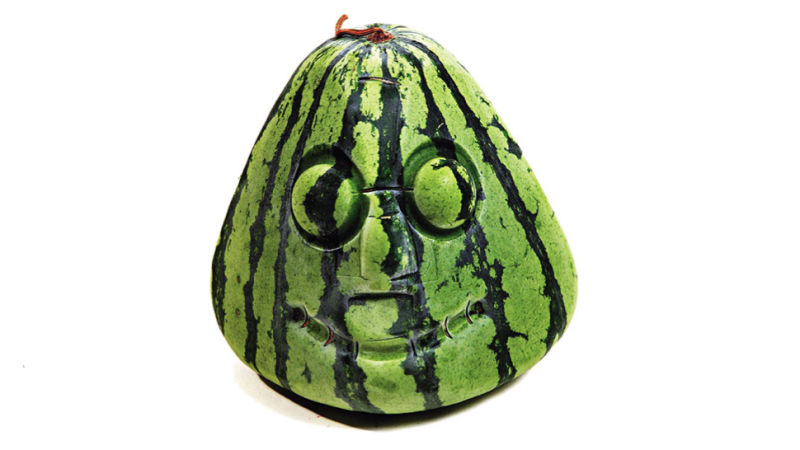Japan Has More Than Just Square Watermelons
There’s a report that wealthy people in Russia are paying over US$800 for Japanese square watermelons. In Russia, that’s supposedly 300 times the price of a regular watermelon. But why square watermelons? That’s so passé!

Watermelon is a popular summer fruit in Japan. People give watermelons as gifts and play “suikawari” (スイカ割り), which is like piñata, but with a watermelon. Depending on the size, a whole watermelon costs around ten bucks in Japan. Then, there are the luxury watermelons, which most people typically don’t buy or eat.
This is where watermelons get interesting, odd, and effing expensive.
Many of these watermelons took years of practice to get their shape right. They are grown in special containers or molds. The heart-shape watermelon (see below), for example, took three years to get just right. Farmers fuss over these melons, which are usually grown in very small batches. They are supposed to taste delicious, too.
Be aware that prices vary depending on the fruit vendor.
The iconic square watermelon is not a regular sight at most Japanese supermarkets. It’s usually priced in the neighborhood of $125. Though sometimes you can get it cheaper—way cheaper.
This is a “Godzilla Egg” watermelon. It’s… very large and comes in a neat crate. The shape isn’t that special. Prices vary between $68 and $150.
The heart-shaped watermelon first started getting attention in 2009. There are now mini versions, too, which are priced at around $200. Large heart-shaped watermelons can be yours for around $350.
As far as shapes go, this might be closest to the traditional round watermelons you find in Japan. It’s called a “dynamite watermelon” and is packaged to look like a bomb. Its slogan is “An explosion of delicious taste!” It’s priced at around $70 or so, making it one of the more inexpensive watermelons.
This is a pyramid watermelon that’s shaped like, wait for it, a pyramid. They’ve been around for a while (since 2004 or so), and start at around $500.
Here is a watermelon grown to look like a calabash, which is an unusually shaped fruit.
Next to the square melon, you are looking at a “jinmen suika” (人面スイカ), which literally means a “human face watermelon”. The Japanese media discovered this watermelon in 2011, and it’s priced at ¥50,000 and up, with some of the larger melons costing over a thousand bucks! The watermelon is grown into a special clip-like model, which gives it the human-like face. The price isn’t the only scary thing about this melon.
These melons are good examples of how preoccupied Japanese can be with not only food presentation, but imbuing that presentation with a sense of playfulness.
Photos: Market81, 永森まこと, 札幌絵手紙, 「もっと」いい家を建てよう!, 首鼠両端, はないろは 超ド素人日記&美食倶楽部, Michiko’s Room, Next, Hiyama, BMW, 市場トピックス, わたしの介護奮闘日記, voice cue, 朔太郎と豆兄弟, , HangHang, kudamononosato
source-kotaku.com
